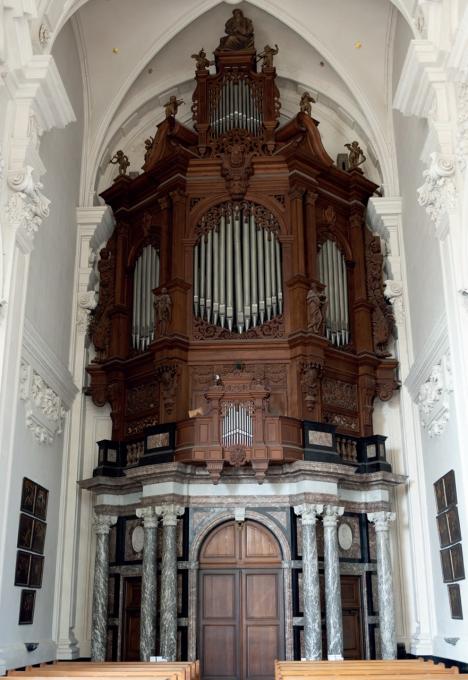The Loret Archives
Introduction
The Music Section of the KBR (Royal Library of Belgium) has preserved since the death of Jean-Pierre Felix, the collection that bears his name, among which are a thousand documents collected by the Belgian organologist, which were to be used for the writing of a sum on the life and work of the organ builder Hippolyte Loret.
A pharmacist by training, Jean-Pierre Felix (1943-2014) began writing his Mélanges d'organologie in 1979, tracing the history of many organs throughout Belgium. He has also participated in a number of collective works, signed hundreds of articles, notes and historical studies, and elaborated numerous specifications and preliminary restoration projects.
The Jean-Pierre Felix Fund contains numerous books on the organ, archival documents, concert programmes, photographs and all the writings of Jean-Pierre Felix.
Thanks to the cooperation of the KBR music department and all its staff, Johan Zoutendijk and Jean Ferrard are gradually making all these documents available to the public in the "Loret Archives".

the organ of Averbode Abbey (1859)
Instructions for use
In the header bar (which is reproduced at the bottom of the drop-down screen), after the "quick search" box is the "advanced search" button (see below) and four navigation buttons, the last of which indicates how many documents in the Loret archive are currently searchable. It is advisable to display 100 or 200 documents per screen.
The grey banner gives the title of each of the six main columns. They can be sorted in ascending or descending order by clicking on the title. The items are sorted by default in chronological date order, so that Loret's original documents are at the top of the list. To have the documents in Jean-Pierre Felix's hand at the top of the list, simply reverse this order.
Once you have found the file you are interested in, click on the "Detail" button to access the actual document. The fields on this page can be searched using the "advanced search" button. After the eleven descriptive headings, which do not require explanation, the fields "Person, Place, Object" contain the items in the text. This allows searches across the entire database, in all documents in one operation. The next field gives you the transcript of the document, and the last field is for displaying possible reproductions of documents.
All comments, additions and corrections are welcome: info@dtbob.org
